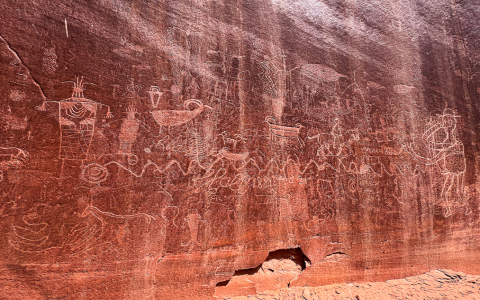How I Stumbled Into This Cowboy Color Rabbit Hole
So yeah, picture this: I was scrolling through Instagram, right? Kept seeing these art prints and t-shirt designs using these specific cowboy colors – you know the ones. Brown, beige, that rusty red, dark blue. It hit me: everyone uses the exact same palette for cowboy stuff. Seriously, try it. Google “cowboy art.” Same damn colors every time. Got me thinking… why? Just lazy designers copying each other? Or is there actually a reason?

I grabbed my laptop, plopped down on the couch with way too much coffee, and started digging. Figured I’d write down what I found, ’cause honestly, it got kinda fascinating. Started simple: “cowboy colors meaning.” That just gave me interior design sites talking about “ranch aesthetic.” Useless. Tried “old west colors history.” Getting warmer.
The Brown and Beige Reality Check
Turns out, it mostly boils down to pure, gritty practicality. Forget romantic movie filters.
- Brown Leather: This was the biggie. Cowboys lived on horseback. Saddles? Brown leather. Chaps? Brown leather. Boots? You guessed it – tough brown leather. It wasn’t a style choice; it was the only material tough enough for the job. Found tons of old-timey photos where everything leather looks the same shade of worn-out earth brown.
- Dusty Beige/Tan: This one slapped me in the face it was so obvious. They were out there on cattle drives for months! Riding through deserts, plains… kicking up dust constantly. Their clothes – wool pants, cotton shirts – wouldn’t stay white or bright colored for more than five minutes. They just baked in the sun and got coated in dirt until they became dusty beige. Saw a quote from some historian saying, “Clean was a luxury; beige was inevitable.” Makes total sense.
That Tricky Blue Question
Okay, so all that brown and tan tracks. But then I kept seeing that deep indigo blue, especially in shirts. Why blue? Started hunting. Turns out it was all about the dye.
Before synthetic stuff, getting good, strong dyes was hard and expensive. Found this article about “indigo” dye. It came from plants and was one of the few natural dyes that could penetrate tough cotton fibers deeply and wouldn’t fade instantly under the brutal sun. Navy blue or indigo held up WAY better than other colors. It also hid dirt reasonably well compared to lighter shades. So it wasn’t about looking sharp; it was about having a shirt that didn’t turn grey after one wash in a creek.
Rusty Red – The Surprising Bit
This one puzzled me at first. Rusty red accents show up a lot in paintings and modern designs. Kept digging.

- Native American Influence: Tripped over mentions of trade blankets. Cowboys interacted with Native American tribes who were masters at using natural dyes. A common color from certain roots or minerals gave a rusty red hue. These blankets were valuable trade items.
- Adobe and Earth: Also stumbled onto info about the buildings out West – adobe bricks. Guess what color they are? That deep, sun-baked terracotta red. It wasn’t a clothing color for cowboys themselves as much, but it defines the landscape they operated in.
- Accent Color: Likely became a design accent later to represent that desert clay, the mesas, the sunset. Kind of symbolic.
My “Aha!” Moment & Why It Matters
Scrunched up all my notes and browser tabs. The revelation wasn’t glamorous. Cowboys weren’t running around in fancy coordinated outfits. Those iconic colors?
- Brown: Workhorse leather and endless dirt.
- Beige: Sun-bleached, dirt-caked clothes.
- Dark Blue/Indigo: The most practical, durable dye available.
- Rusty Red: The land itself and influences from those they traded with.
Every single “iconic cowboy hue” stems directly from survival, necessity, and the harsh realities of their environment. Nothing was frivolous. It’s the exact opposite of a fashion statement – it’s the uniform dictated by brutal practicality.
Ended up spending waaay longer than planned, but it clicked. Every time I see those colors together now, I don’t just see a design trend. I see dusty trails, worn leather, sun-faded cotton, and dyes mixed from plants. There’s a whole history baked into those shades, born purely from the work they did. Kinda humbling, actually.
Went back to those Instagram posts… yep. Seeing that palette used meaningfully hits different now. Feels less like a cliche and more like a nod to the real grit of it all.
